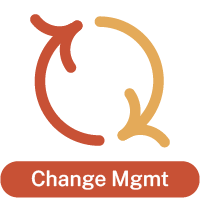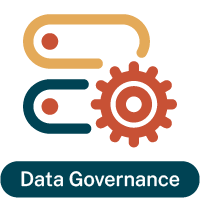In my article, That “Soft” Stuff is Really the Hard Stuff, I shared common objectives to organizational change management. I also offered compelling statistics to show the benefits for including OCM in enterprise information management initiatives — like saving time and money, as well as greater program success.
Now let’s discuss how people react to change and how that’s likely to impact your business. If it helps, think about your own reaction to a recent change you experienced. How did you feel about it? What concerns did you have? Were those concerns addressed or not? How did that make you feel?
Now think about changes your organization experienced — for example:
- How many times have you tried to do (fill in the blank) before? How much money has been spent on this already? In the EIM world, and elsewhere, a very common reaction is, “Here we go again.”
- Did you lose critical data resources — i.e., people or funding — because nothing changed?
- What was the impact on productivity?
- How many deadlines were missed? What did that cost you?
Why Change is Hard
The reality is that people naturally resist change. While it may take us in an exciting direction offering new opportunities, it can still create fear and resistance.
Why is this?
Many times, people feel a loss of identity for what was familiar in their world. Fear of failure can develop as we realize that criteria for success in the new environment is different — and that we might not have the required skills. Also, it can be difficult to understand what things will be like in the “new world.”
For example, change in the workplace can make people:
- Feel overloaded with current responsibilities
- Wonder WIIFM (“What’s in it for me?”)
- Question why there is no visible sponsorship by leaders and managers
- Criticize the organization’s efforts in how change is being managed
Recognizing Resistance to Change
When people resist change, it can take different forms — from vocal opposition to downright sabotage. If that fear and resistance doesn’t get addressed, it grows exponentially and can seriously damage an organization’s morale and bottom line.
The bottom-line impact is where the “hard” stuff comes in. Good change management has a significant hard-dollar impact on an organization. Leaders are generally unaware of or dismiss the impact of poorly managed change on the bottom line. But this is a mistake.
Consider this scenario when translating the “soft stuff” into the potential hard dollar impacts of change: In a department-wide email, the Chief Technology Officer of an insurance company announced that its IT employees would need to begin using new data governance software in two months. No one had communicated anything in advance to the department. No “heads up,” no purchase rationale, and definitely no help requested from key staff to vet software vendors.
The result?
It resulted in days of churning as the IT staff and many of its business partners worked themselves up over the news. They speculated what it meant to not be in the know and what leadership’s expectations would be. They also were concerned about the implementation plan and wondered when they would be trained on the new software.
How much work do you think was accomplished during this time? What do you think this cost the company in terms of pure dollars and also broken trust? How much productivity and loyalty do you think the CTO will get moving the effort forward as everyone grapples with this change?
Let’s look back at the list of questions I shared earlier and use them as a basis to develop a business case for OCM.
Here are two examples to build on and customize for your business case:
- Research past efforts where your organization tried to do the same EIM effort you’re now championing. If this is the first time it’s being tried, do research to find out what similar organizations may have spent trying to implement something multiple times. Why did those efforts fail? Chances are you’ll find change management factors, like communication and executive sponsorship, were involved.
- Estimate the costs to your organization if you don’t effectively manage the change. Engage your finance and HR counterparts to help develop assumptions about the impact to cost drivers using (or developing) current baselines for each. Highlight research that shows the impact of poorly managed change and the associated hard dollar cost with factors like turnover, more benefits claims, greater absenteeism and missed deadlines. For example, good data people are getting harder and harder to come by. What if you lose several key resources? What will it cost you to find and replace them? Consider internal and external recruiting costs, compensation, orientation and training.
Use examples like these to demonstrate how much time and money could be wasted when a plan to manage change is ineffective or nonexistent. It will help build your case for justifying the investment in OCM.
Effective organizational change management has key characteristics.Click To TweetCharacteristics of Effective OCM
I’ve shared the importance of having an effective change management approach and plan. But what does this really mean and what does it look like?
Effective change management has the following characteristics:
- Clear, compelling vision and rationale. If you “do change” right, people should be able to look at the vision and understand their role related to organization’s new direction. (Side note: One company I worked with had a great theoretical feel for change management, but didn’t follow its principles. They refused to articulate a clear vision for data governance. They were afraid of dealing with the anticipated negative reaction from the business. There was no vision for data governance or even any basic communication to attempt to educate the organization on its importance and value. So … no vision and rationale = no data governance. The firm’s entire EIM strategy went down the drain because no one understood what was going on.)
- Visible, consistent leadership support. Do your executive sponsor(s) and leadership understand and share the importance of change management? Are they visibly participating in it? In Prosci’s best practices survey report for 2014 (I mentioned them in my first OCM article), this was the number one reason for project success or — in its absence — failure. There’s no gray area here: You must have the right sponsor helping to drive your effort.
- Grounded in thoughtful prep work. Make sure the core team driving OCM for the data initiative spends time assessing the culture and other organizational aspects. Gauging the environment where change will occur can surface key issues. A culture of siloed organizations means issues with data sharing or agreement on definitions and importance. For EIM, this also means a thorough understanding of where the company is along an information maturity scale. For example, a company at the low end of the scale will require different change actions — especially in communication and education — than one even slightly further along.
- Strategic plan with identified owners and tactics. Identify resistance areas, such as lines of business and specific departments or individuals, and develop plans to address the concerns. Engage leaders from areas most impacted by the change, and get them involved in crafting and executing a future-state vision.
- Realign people and process, where needed. To support the initiative’s new direction, it’s likely your organization will need to realign. This could include structure, roles and responsibilities, performance management goals and/or incentive plans. Without some realignment, sustainable change isn’t likely.
Change Management Benefits EIM
Data governance, Master Data Management and other EIM efforts require change management. Success with these programs demands a framework to help accelerate change and avoid the costs of poorly managed change. OCM is that framework with its open communication environment where people’s concerns are acknowledged and addressed. It significantly increases buy-in and engagement and can lead to successful, sustainable outcomes for any EIM initiative.
Ultimately, the changes you are planning are in the hands of your people. You need their support to make the effort successful, and they need support executing the changes. The faster you can help them understand what’s happening, the faster they will be engaged and get past their resistance and fear.
Don’t dismiss change management as the soft and squishy stuff that just makes people feel good. It could cost you plenty if you do.
Article contributed by Pam Thomas. She is an organizational effectiveness practitioner with more than 30 years of experience as a consultant and executive-level leader. As a veteran Human Resources strategist, she is adept at aligning HR and business strategies — as well as identifying and managing all the necessary elements to affect change in organization and drive business results through people. Pam has managed complex and diverse change management programs and projects for a variety of organizations.


